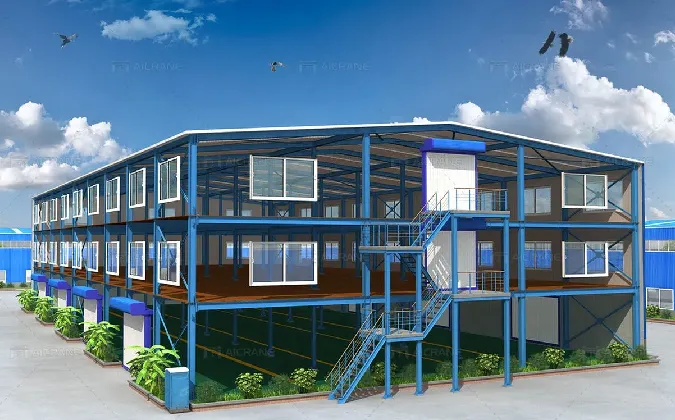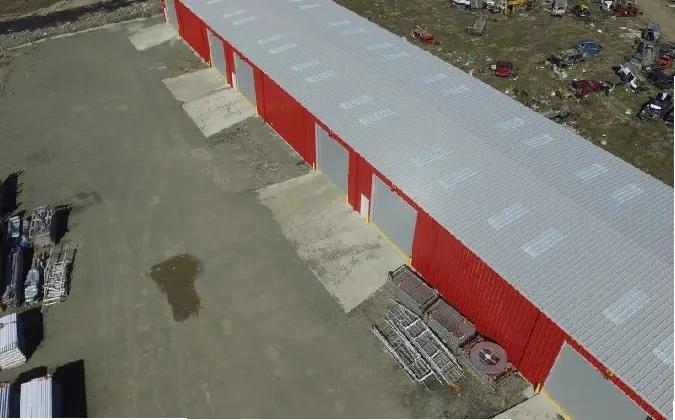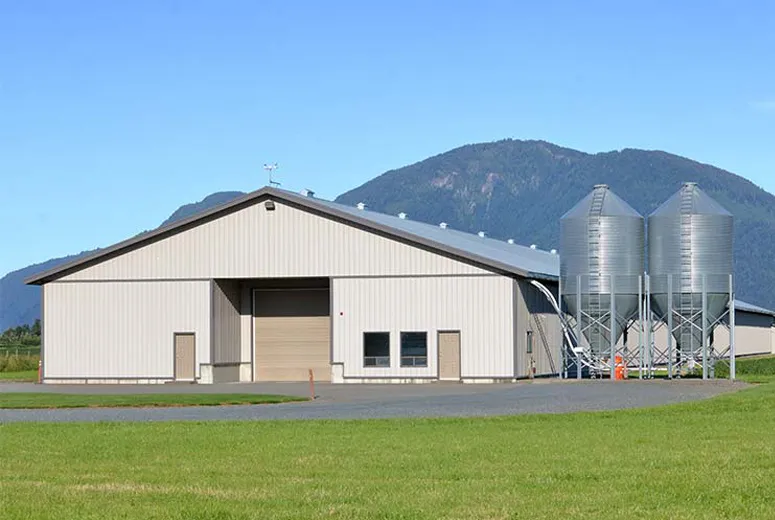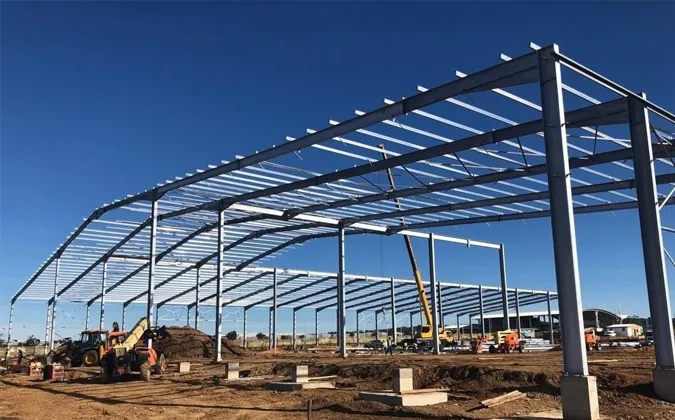Sep . 19, 2025 18:05 Back to list
Industry Trends in Steel Structure Building
The global demand for high-performance industrial and commercial facilities is driving significant advancements in the field of steel structure building. Key trends indicate a robust shift towards sustainable practices, modular construction methodologies, and the integration of advanced digital technologies. Modern enterprises, particularly in sectors requiring expansive and durable infrastructure like a steel structure plant, are prioritizing solutions that offer not only structural integrity but also environmental responsibility and operational efficiency.
Sustainability remains a paramount concern, with increasing emphasis on using recyclable materials, optimizing energy consumption during fabrication, and designing structures for long lifecycles and potential deconstruction. The modular nature of steel allows for significant waste reduction both on-site and during manufacturing. Digitalization, encompassing Building Information Modeling (BIM) and advanced computational design, is revolutionizing planning, fabrication, and installation, leading to fewer errors, faster project completion, and enhanced cost control. Furthermore, there's a growing need for greater durability and resilience against extreme weather events, seismic activity, and corrosive environments, pushing innovation in material science and protective coatings for every new steel structure factory.
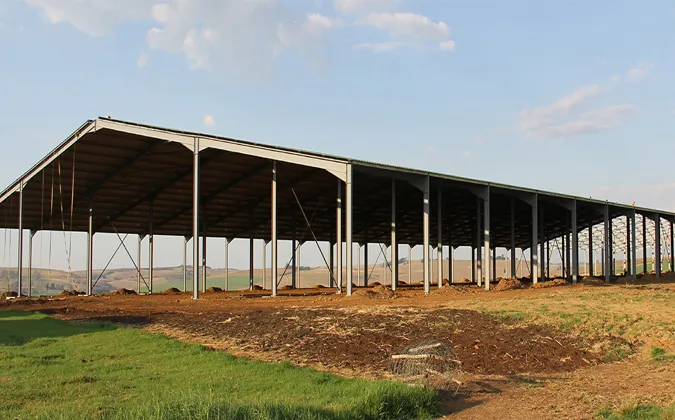
Technical Specifications and Materials
The foundation of a reliable steel structure building lies in its material selection and precise technical specifications. High-grade structural steel is crucial for ensuring the integrity and longevity of any industrial facility. Common steel grades utilized include Q235B and Q345B in China (equivalent to ASTM A36 and A572 Gr.50 respectively in the US), known for their excellent yield and tensile strengths, crucial for bearing significant loads and resisting environmental stresses.
Key Material Properties and Standards
Beyond the structural steel, other critical components include purlins, bracing (e.g., rod bracing, angle bracing), and cladding materials. Advanced coating systems, such as hot-dip galvanization (per ISO 1461) or multi-layer epoxy paint systems, are applied to protect against corrosion, significantly extending the service life of the structure to 50 years or more, even in harsh industrial environments. Fasteners typically conform to ASTM A325 or A490 standards, ensuring robust connections. All materials and fabrication processes adhere to stringent international quality control standards, including ISO 9001 for quality management and ANSI/AISC 360 for structural steel buildings.
Detailed Manufacturing Process Flow
The construction of a steel structure plant follows a meticulously engineered process to ensure precision, durability, and efficiency. Our manufacturing workflow integrates advanced technologies and rigorous quality control at every stage.
1. Design and Engineering
Utilizing advanced software such as Tekla Structures and AutoCAD, our engineers develop detailed structural designs and fabrication drawings. This includes calculating load-bearing capacities, seismic resistance, and wind loads, adhering to international codes like Eurocode 3 or AISC 360-16. BIM technology is employed to create a comprehensive digital model, optimizing material usage and minimizing potential clashes.
2. Material Preparation
Raw steel plates, sections, and pipes undergo initial inspection for material conformity (e.g., EN 10204 3.1 certification). CNC plasma and flame cutting machines precisely cut components to size. Automated drilling and punching machines create bolt holes with high accuracy, essential for swift on-site assembly.
3. Fabrication
Welding is a critical process, often automated or semi-automated using submerged arc welding (SAW) or gas metal arc welding (GMAW). Skilled welders, certified to AWS D1.1 or ISO 9606, assemble beams, columns, and trusses. Forging and CNC machining are employed for specialized connections and high-precision components, ensuring tight tolerances for critical structural elements.
4. Surface Treatment
Components undergo shot blasting to SA 2.5 standards to clean the surface and prepare it for protective coatings. This is followed by the application of primers, intermediate coats, and finish coats, typically high-performance epoxy-polyurethane systems, or hot-dip galvanization. This ensures maximum corrosion resistance, critical for environments in the petrochemical or metallurgy industries, and contributes to the structure's projected 50+ year service life.
5. Quality Control and Testing
Throughout fabrication, stringent quality checks are performed. This includes visual inspection, dimensional checks, ultrasonic testing (UT), magnetic particle testing (MT) for welds, and coating thickness measurements (per ISO 2808). All tests adhere to international standards like ISO 17638 for visual inspection of welds and ISO 17640 for ultrasonic testing, ensuring every component meets design specifications and robust performance standards.
6. Pre-assembly (Optional) & Packaging
For complex structures, components may undergo trial assembly in the factory to verify fit-up before shipping. All components are then carefully packaged, labeled, and prepared for transportation, ensuring protection against damage during transit.
7. On-site Installation Guidance
We provide comprehensive installation manuals and, if required, on-site technical support to ensure seamless and efficient erection of the steel structure factory, minimizing project timelines and costs.
Technical Advantages and Application Scenarios
The inherent properties of steel confer a multitude of technical advantages that make a steel structure building the preferred choice for a vast array of industrial and commercial applications. These advantages translate directly into long-term cost savings, enhanced safety, and operational flexibility for businesses.
Key Technical Advantages:
- High Strength-to-Weight Ratio: Steel offers superior strength compared to its weight, enabling larger clear spans and reduced foundation requirements, which is crucial for manufacturing facilities and warehouses requiring vast open spaces.
- Durability and Seismic Resistance: Steel structures are highly ductile, allowing them to deform without fracturing under stress, providing excellent resistance to seismic events and heavy wind loads. Proper design can meet stringent local building codes in high-risk zones.
- Speed of Construction: Prefabricated components are manufactured off-site under controlled conditions, leading to quicker on-site assembly, reduced labor costs, and faster project completion compared to traditional construction methods.
- Cost-Effectiveness: While initial material costs might seem higher, the speed of construction, reduced labor, lower foundation costs, and long service life contribute to a superior total cost of ownership (TCO).
- Sustainability: Steel is 100% recyclable without loss of properties, making it an environmentally responsible choice. Modern steel production also uses significantly less energy than in the past.
- Corrosion Resistance: With advanced coating systems like hot-dip galvanization or multi-layer epoxy paints, steel structures can withstand aggressive environments (e.g., chemical fumes in petrochemical plants) for decades, ensuring a long and reliable service life.
- Energy Efficiency: Steel structures can be easily integrated with high-performance insulation systems for walls and roofs, significantly improving thermal performance and reducing operational energy costs for heating and cooling.
- Flexibility and Adaptability: Steel structures allow for easy modifications, expansions, and internal reconfigurations, adapting to evolving operational needs without extensive structural changes.
Typical Application Scenarios:
The versatility of steel structures makes them ideal for a wide range of target industries and specific applications:
- Petrochemical and Chemical Industries: For specialized production facilities, processing plants, and storage warehouses where corrosion resistance, explosion protection, and structural stability are paramount.
- Metallurgy and Heavy Manufacturing: Ideal for large-span workshops, foundries, and rolling mills requiring heavy crane support, high temperature resistance, and robust structural frames.
- Power Generation: Construction of power plant buildings, turbine halls, and transformer stations, where reliability and resistance to vibrations are critical.
- Water Supply & Drainage: Housing for water treatment plants, pumping stations, and desalination facilities, where structural integrity in damp or chemically exposed environments is essential.
- Logistics and Warehousing: Expansive warehouses, distribution centers, and freight terminals benefit from large clear spans for efficient material handling and storage.
- Aviation: Aircraft hangars and maintenance facilities demand vast column-free spaces, which steel structures provide efficiently and economically.
- Commercial and Public Buildings: Shopping malls, exhibition centers, sports arenas, and multi-story car parks frequently leverage steel for its aesthetic flexibility, speed of construction, and large open spaces.
"Our new steel structure factory allowed us to expand production capacity by 30% in just under 8 months. The energy efficiency features also significantly reduced our operating costs, demonstrating the true value proposition of modern steel construction." - Project Manager, Automotive Parts Manufacturer.

Vendor Comparison and Customized Solutions
Selecting the right vendor for a steel structure building project is as critical as the design itself. A comprehensive comparison involves evaluating multiple factors beyond just pricing, focusing on expertise, reliability, and the ability to deliver tailored solutions that meet specific operational demands.
Vendor Evaluation Criteria:
Tailored Customization for Optimal Performance:
Every industrial facility has unique requirements. A reliable vendor must offer robust customization options to ensure the steel structure plant perfectly aligns with operational needs. Our approach to customized solutions includes:
- Structural Geometry: Tailoring clear span requirements, eave heights, roof slopes, and multi-span configurations to maximize usable space and operational flow.
- Load Bearing Capacity: Designing structures to support specific equipment, such as overhead crane systems (up to 100+ tons capacity), heavy machinery, mezzanines, and process piping loads.
- Cladding and Insulation: Offering a range of wall and roof cladding materials (e.g., corrugated steel sheets, sandwich panels with PU/EPS/Rockwool core) to achieve desired thermal, acoustic, and aesthetic performance. This can significantly improve energy saving.
- Ventilation and Lighting: Integrating natural ventilation systems (louvers, roof vents) and natural lighting solutions (skylights, translucent panels) to enhance working conditions and reduce energy consumption.
- Specialized Environment Requirements: Implementing specialized coatings or materials for corrosive environments (e.g., chemical storage), fire-rated designs for high-risk areas, or enhanced seismic designs for unstable regions.
- Door and Window Systems: Customized sizing and placement of industrial doors (rolling, sliding, overhead), personnel doors, and windows to facilitate logistics and access.
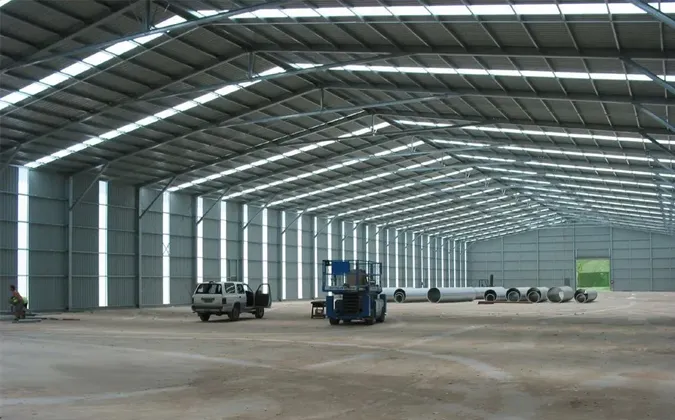
Application Case Studies
Our extensive experience in delivering advanced steel structure building solutions has equipped numerous clients across diverse industries with high-performance facilities. These case studies highlight our capability to provide complex, tailored solutions and demonstrate tangible benefits.
Case Study 1: Large-Scale Automotive Manufacturing Plant
- Client: Global Automotive Manufacturer
- Location: Industrial Hub, Southeast Asia
- Project Scope: Design, fabrication, and erection support for a 150,000 sq. meter steel structure plant, including multiple production lines, heavy-duty crane runways (40-ton capacity), and integrated utility corridors.
- Challenge: Rapid expansion required a facility with exceptionally large clear spans for flexible assembly lines, high load-bearing capacity for automated machinery, and a tight construction timeline of 10 months.
- Solution: We engineered a complex portal frame structure using Q345B steel, optimized for seismic resistance and wind loads. Fabrication utilized advanced CNC processes for precision, followed by a multi-layer epoxy coating for durability. Our project management ensured pre-fabricated components were delivered precisely as needed, enabling simultaneous foundation work and structure erection.
- Outcome: The plant was operational two weeks ahead of schedule, facilitating an immediate boost in production capacity. The robust structure provided superior operational flexibility, accommodating future expansions and modifications with ease.
Case Study 2: Chemical Storage and Processing Facility
- Client: Specialty Chemical Producer
- Location: Coastal Industrial Zone, Middle East
- Project Scope: Development of a 45,000 sq. meter steel structure factory for chemical storage, blending, and packaging, requiring exceptional corrosion resistance and strict safety compliance.
- Challenge: The coastal environment combined with exposure to corrosive chemicals demanded an advanced protection system for all steel elements. The facility also needed to integrate specialized ventilation and fire suppression systems.
- Solution: All structural steel components underwent hot-dip galvanization followed by an additional marine-grade epoxy topcoat, exceeding ISO 12944 C5-I corrosion category standards. The design incorporated passive fire protection and strategic placement of ventilation openings to manage chemical fumes.
- Outcome: The facility has demonstrated exceptional durability and corrosion resistance over five years of operation, with minimal maintenance required on the structural elements. The client praised the proactive approach to addressing environmental challenges.

Trustworthiness & Support: FAQ, Lead Time, Warranty
Establishing trust and providing transparent information are cornerstones of our client relationships. We aim to address common concerns proactively and ensure comprehensive support throughout the project lifecycle of your steel structure building.
Frequently Asked Questions (FAQ):
- Q: What is the typical service life of your steel structures?
- A: With proper design, material selection, and protective coatings, our steel structure plant buildings are engineered for a service life of 50 years or more, even in challenging industrial environments.
- Q: Are your steel structures compliant with international building codes?
- A: Absolutely. Our designs and fabrication processes adhere to major international standards such as AISC, ASTM, BS, EN, and relevant local building codes, ensuring compliance and safety globally.
- Q: Can your structures accommodate heavy machinery and crane systems?
- A: Yes, our design team specializes in integrating heavy-duty crane systems (single girder, double girder, gantry cranes) with capacities ranging from 5 to over 100 tons, along with supports for specialized industrial machinery. Each design is custom-engineered to specific load requirements.
- Q: How do you ensure corrosion resistance in harsh environments?
- A: We offer comprehensive anti-corrosion solutions including hot-dip galvanization (per ISO 1461), and multi-layer high-performance epoxy-polyurethane coating systems tailored to the specific corrosive elements present in the operating environment, from coastal salinity to chemical exposure.
Lead Time and Fulfillment Details:
Our lead times are project-specific, influenced by the complexity, size, and customization requirements of each steel structure building. Generally, a typical project follows this timeline:
- Design & Engineering Phase: 2-4 weeks (post-contract)
- Material Procurement & Fabrication: 4-12 weeks (depending on scale and steel availability)
- Surface Treatment & Quality Control: 1-3 weeks
- Shipping: Varies by destination (e.g., 3-6 weeks for international maritime shipping)
We maintain clear communication channels, providing clients with regular updates on project milestones and shipping schedules. Expedited services may be available upon request and project feasibility.
Warranty Commitments:
We stand behind the quality and durability of our steel structures. All projects come with a standard structural warranty, typically ranging from 10 to 25 years, covering material defects and fabrication workmanship. Specific warranty terms for protective coatings and non-structural components will be detailed in the project contract. Our commitment extends to ensuring your investment is protected for its entire operational life.
Comprehensive Customer Support:
Our relationship with clients extends far beyond project completion. We offer:
- Dedicated Project Manager: A single point of contact throughout the design, fabrication, and delivery phases.
- Technical Support: Access to our engineering team for any structural queries or modifications required post-installation.
- Installation Guidance: Detailed erection manuals and, if needed, on-site supervision or training to assist your local construction teams.
- Spare Parts & Maintenance Advice: Provision of replacement components and expert advice on maintenance schedules to maximize the lifespan and performance of your steel structure factory.
Conclusion
In the rapidly evolving landscape of industrial and commercial development, the modern steel structure building stands out as a superior solution. Its inherent strength, adaptability, and sustainability, coupled with advanced manufacturing techniques and rigorous quality control, make it an indispensable asset for businesses seeking durable, efficient, and future-proof infrastructure. From sophisticated manufacturing facilities to expansive logistics hubs, steel structures provide the foundational strength for operational excellence and long-term investment value. Choosing the right partner who combines technical expertise, a commitment to quality, and a client-centric approach is paramount to realizing the full potential of these advanced building systems.
References
- American Institute of Steel Construction (AISC). (2016). Specification for Structural Steel Buildings (ANSI/AISC 360-16). Chicago, IL: AISC.
- ISO 9001:2015 - Quality management systems — Requirements. International Organization for Standardization.
- ISO 1461:2022 - Hot dip galvanized coatings on fabricated iron and steel articles — Specifications and test methods. International Organization for Standardization.
- European Committee for Standardization (CEN). (2005). EN 1993-1-1: Eurocode 3: Design of steel structures – Part 1-1: General rules and rules for buildings. Brussels, Belgium: CEN.
- ASTM International. (2020). ASTM A36/A36M - 20: Standard Specification for Carbon Structural Steel. West Conshohocken, PA: ASTM International.
-
Bolted Connections in Steel Frame Warehouse
NewsNov.17,2025
-
Hay Storage in Farm Metal Buildings
NewsNov.17,2025
-
Advantages of a Steel Portal Frame Shed
NewsNov.17,2025
-
The Erection Process of a Steel Building Hangar
NewsNov.17,2025
-
Energy Efficiency of Steel Dome Garage Kits
NewsNov.17,2025
-
Fire Resistance of Kit Metal Garages
NewsNov.17,2025
Products categories
Our Latest News
We have a professional design team and an excellent production and construction team.








